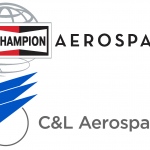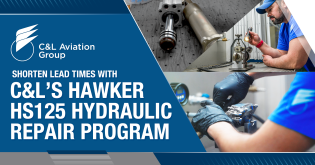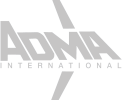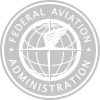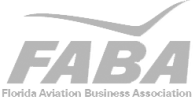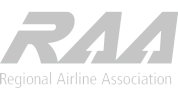We use a lot of acronyms in aviation. It almost sounds like a completely different language. If you’re new to aviation acronyms (or just want to know the meaning of that acronym you use all the time!), you’ve come to the right place.
We’ve categorized hundreds of aviation acronyms below. To find the acronym you need to know, either use the search function or review the entire list, grouped by category.
Aircraft Part Conditions /Types of Aircraft Parts
| Acronym | Full Title | Definition |
|---|---|---|
| AR | As Removed | The part is in the same condition as when it was removed from the aircraft |
| BER | Beyond Economical Repair | The cost to repair or overhaul the part exceeds the part’s value |
| EXP | Expired | The aircraft part has exceeded its limit or shelf life |
| FN | Factory New | The aircraft part is brand new from the manufacturer |
| FT | Function Tested | The aircraft part has gone through a required inspection/evaluation process to prove it is functional |
| IN | Inspected | The aircraft part has been visually inspected after removal from the aircraft to determine serviceability |
| LLP | Life Limited Part | The aircraft part has a mandatory replacement limit |
| MD | Modified | The aircraft part has been modified from its original configuration |
| NE | New | The aircraft part has never been used and has no operating time or cycles |
| NS | New Surplus | The aircraft part has gone through one or more sellers but has never been used and has no operating time or cycles |
| OH | Overhauled | The aircraft part has been refurbished to applicable standards |
| RB | Rebuilt | The aircraft part has been disassembled, inspected, repaired as necessary, reassembled, tested, and approved to the same tolerances and limits as a new part |
| RJ | Rejected | The aircraft part is rejected because it is unrepairable or the repair cost is not economical |
| RP/REP | Repaired | The aircraft part was restored to airworthy condition |
| SV | Serviceable | The aircraft part is deemed airworthy and ready to return to service |
At the Airport
| Acronym | Full Title | Definition |
|---|---|---|
| AFL | Airfield Lighting | A lighting system that supports pilots during take-off, landing, and taxi |
| ALS | Approach Lighting System | Lights that extend from the end of the runway |
| ATC | Air Traffic Control | Personnel who authorize and control commercial aircraft on the ground and in flight |
| FOD | Foreign Object Debris | Objects that interfere with or get too close to an aircraft or personnel, resulting in damage or injury |
| MGLW | Maximum Gross Landing Weight | A measurement in one thousand units at which an aircraft is authorized by the FAA to land at an airport |
Avionics
| Acronym | Full Title | Definition |
|---|---|---|
| ACARS | Aircraft Communication, Addressing, and Reporting System | A digital datalink system for transmitting routine reports and messages between the aircraft and ground stations |
| ACAS | Airborne Collision Avoidance System | An airborne system for alerting pilots of the presence of other aircraft nearby and the possibility of a mid-air collision. Also known as Traffic Alert and Collision Avoidance System (TCAS) |
| ACLS | Automatic Carrier Landing System | A system that assists aircraft when landing on an aircraft carrier by providing automatic control of flight path and approach velocity |
| ADAHRS | Air Data Attitude Heading Reference System | Provides air data information as well as attitude and heading to the flight deck instruments |
| ADS | Automatic Dependent Surveillance | A surveillance technique used by aircraft that automatically provides data from onboard navigation and position-fixing systems |
| ADS-A | Automatic Dependent Surveillance Address | Automated transmission of location information for aircraft using an airline-specified communication system |
| ADS-B | Automatic Dependent Surveillance-Broadcast | A surveillance technique that determines the aircraft’s position via satellite navigation or other sensors |
| ADS-C | Automatic Dependent Surveillance Contract | A surveillance technique where data is transmitted between the ground system and the aircraft via a datalink contract with a provider network |
| AFCS | Automatic Flight Control System | A system that integrates autopilot, related flight director systems, and attitude heading reference system (AHRS) For Aircraft Flight Control System (AFCS), see Cockpit/Flight Deck section |
| AHRS | Attitude Heading Reference System | An inertial sensor comprised of an IMU and another sensor used for heading and attitude determination |
| ANSP | Air Navigation Service Provider | An organization providing Air Navigation Services by managing air traffic for a company, region, or country. |
| ATN | Aeronautical Telecommunications Network | An internetwork architecture that provides ground/ground, air/ground, and avionic data subnetworks for using ISO OSI Reference Model interface services and protocols |
| B RNAV | Basic Area Navigation | A method of instrument flight rules navigation that allows an aircraft to choose a course within a network of navigation beacons |
| CMS | Cabin Management System | An interface that allows crew and passengers to control various cabin functions, such as lighting, climate, and entertainment systems |
| CNS/ATM | Communication, Navigation, and Surveillance / Air Traffic Management | The main functions forming the air traffic management infrastructure to ensure safe and efficient air travel |
| CPDLC | Controller-Pilot Data Link Communications | An aircraft traffic control (ATC) communication system between controller and pilot using datalink (same as ADS-C) |
| CVR | Cockpit Voice Recorder | A recording device for recording radio transmissions and sounds in the cockpit |
| DFDR | Digital Flight Data Recorder | A system used for recording and storing data from sensors mounted throughout the aircraft avionics and flight control systems |
| DLR | Datalink Recorder | DLR system records CPDLC messages for each data link type (typically a digital type CVR) |
| EAFAP | Engineering Assisted Field Approval Process | A document put out by Universal Avionics authorizing approved dealers to install their FMS/LPV systems on aircraft approved within specific guidelines |
| EFIS | Electronic Flight Instrument System | A flight deck instrument display system in which the display technology used is electronic rather than electromechanical. EFIS systems portray information using cathode ray (CRT) or liquid-crystal display (LCD) technology. EFIS consists of PFD, MFD, and EICAS (see Cockpit/Flight Deck section) |
| EGNOS | European Geostationary Navigation Overlay Service | A satellite-based augmentation system used to improve GPS performance in European Airspace |
| EGPWS | Enhanced Ground Proximity Warning System | A system that alerts pilots if they are flying at an excessive rate for the aircraft’s location (i.e., approaching the ground, obstacle, or water’s surface) |
| ELT | Emergency Locator Transmitter | An independent transmitter that broadcasts signals to determine the location of aircraft activated by excessive G-forces |
| EVS | Enhanced Vision System | A system that provides information from aircraft sensors during limited visibility environments. Also known as cockpit heads up display (HUD) |
| FANS-1/A | Future Air Navigation System 1/A (developed by Airbus) | A system providing direct data link communication between pilot and air traffic controller for clearances, pilot requests, and reporting aircraft position primarily over water |
| FDAU | Flight Data Acquisition Unit | A unit for receiving various forms of data from sensors and avionics systems and routing them to the flight data recorder (FDR) or quick access recorder (QAR) |
| FDR | Flight Data Recorder | A device used to record aircraft performance parameters to be reviewed in case of an accident |
| FIDS | Flight Information Display System | A computer system that displays flight information (arrivals/departures) to passengers at an airport |
| FMS | Flight Management System | A computer on board the aircraft provides virtual data for navigation, performance, and aircraft operations. The FMS is a specialized computer system that automates a wide variety of in-flight tasks, reducing the workload on the flight crew |
| GAGAN | GPS-Aided Geo-Augmentation Navigation | An augmentation system implemented in India that uses GPS constellation and adds accuracy and integrity |
| IFE | In-Flight Entertainment | An onboard entertainment system that provides passengers with access to Wi-Fi, movies, TV, and/or music |
| ILS | Instrument Landing System | A precision radio navigation system for providing vertical and lateral runway approach For Inventory Locator System (ILS), see Selling and Returning Aircraft and Parts section |
| INS | Inertial Navigation System | A navigation system used to track an object’s position and orientation relative to a known starting point |
| IRS | Inertial Reference System | A system providing safety critical position and precise attitude and heading, and is a key component of the aircraft’s inertial navigation system (INS) |
| LNAV | Lateral Navigation | A non-precision instrument approach included in RNAV and is often combined with VNAV |
| LP | Localizer Performance | A non-precision landing approach for WAAS lateral guidance |
| LPV | Localizer Performance with Vertical Guidance | A precise landing approach using an SBAS/WAAS-enabled system that is more accurate than the instrument landing system (ILS) |
| MSAS | Multi-functional Satellite with Vertical Guidance | A Japanese satellite-based augmentation system (SBAS) using GPS augmentation to improve accuracy, integrity, and availability |
| PBN | Performance- Based Navigation | One of several enablers for implementing global standardization of RNAV and RNP, changing an aircraft’s required navigation capability from sensor-based to performance-based |
| REU | Remote Electronics Units | Electronics located on or near the actuator to control the actuator |
| RNAV | Area Navigation | A navigation method that allows operators to choose any flight course within a network of navigation beacons |
| QAR | Quick Access Recorder | An airborne flight recorder for providing access to flight data through cellular networks and/or memory cards |
| SBAS | Satellite-Based Augmentation System | An augmentation system using geostationary satellites to provide integrity assurance and increased accuracy |
| TAWS | Terrain Awareness and Warning System | A warning system that alerts pilots that they are flying in potentially hazardous proximity to terrain |
| TCAS | Traffic Alert and Collision Avoidance System | See ACAS |
| VNAV | Vertical Navigation | VNAV provides glidepath information during an instrument approach |
| WAAS | Wide Area Augmentation System | An accurate air navigation system developed by the FAA for improved accuracy, integrity, reliability, and availability, using global positioning and geostationary satellites |
Batteries
| Acronym | Full Title | Definition |
|---|---|---|
| Ni-Cd / NiCad | Nickel Cadmium | Batteries made of nickel-cadmium cells that contain interleaved electrodes and a separator system with a gas barrier |
| SLA | Sealed Lead Acid | Batteries that are best known as being maintenance-free and spill-proof |
Certificates and Forms
| Acronym | Full Title | Definition |
|---|---|---|
| COC /CofC | Certificate of Conformance | A certificate stating that an aeronautical product meets required standards or specifications |
| CRS | Certificate of Release to Service | A certificate demonstrating that a task has been verified and signed by authorized personnel (this certificate is not a statement of airworthiness) |
| ISO | International Organization for Standardization | An international organization that sets and standardizes measurements for industrial, commercial, and scientific purposes |
| STC | Supplemental Type Certificate | A type certificate (TC) denoting civil aviation authority approval for modification or major repair of an aeronautical product on an existing type certified aircraft, engine, or propeller |
| TC | Type Certificate | A certificate for a particular type of aircraft signifying airworthiness For Total Cycles (TC), see Cycles and Times section For Transport Canada (TC), see Regulation Authorities section |
| TIA | Type Inspection Authorization | An internal FAA document used to authorize official conformity, airworthiness inspections, and flight tests meant to fulfill the specified requirements for the Type |
Cockpit / Flight Deck
| Acronym | Full Title | Definition |
|---|---|---|
| ADC | Air Data Computer | A computer that determines various aircraft information such as calibrated airspeed, Mach number, and altitude/altitude trend |
| ADF | Automatic Direction Finder | Avionics used for en-route navigation and approach procedures |
| ADI | Attitude Direction Indicator | A computer that receives and processes information from the aircraft’s navigation system (a.k.a. FDI) |
| AFCS | Aircraft Flight Control System | A conventional fixed-wing system that consists of flight control surfaces, cockpit controls, connecting linkages, and other operating mechanisms that control flight direction For Automatic Flight Control System (AFCS), see Avionics section |
| AFM | Aircraft Flight Manual | A physical or electronic book containing the information required to operate a specific aircraft. Every aircraft has its own AFM |
| AFMS | Aircraft Flight Manual Supplement | A chapter within the Aircraft Flight Manual (AFM) |
| CDI | Course Deviation Indicator | An instrument used to determine an aircraft’s lateral position as it relates to a radio navigation beacon |
| CDS | Cockpit Display System | A system that provides the human machine interface (HMI) that allows the crew to manage the cockpit and interact with the avionic systems |
| CDU | Control Display Unit | A computer interface for accessing flight management computers (FMC) and other aircraft computers |
| DME | Distance Measurement Equipment | A radio navigation aid to measure the aircraft’s slant range from a DME ground station |
| EFD | Electronic Flight Displays | A cockpit display consisting of electronic instruments; commonly known as a “glass cockpit” |
| EICAS | Engine Indicating and Crew Alerting Systems | A system that provides flight crews with instrumentation regarding the engines, such as speed of rotation, temperature, etc., and alerting the crew in case of system failure |
| FCU | Flight Control Unit | A display unit used for automatic flight controls, such as the flight management guidance system (FMGS) For Fuel Control Unit (FCU), see Fuel section |
| FDI | Flight Director Indicator | See ADI |
| FMC | Flight Management Computers | The computer component of the flight management system (FMS; see Avionics) |
| FMGS | Flight Management Guidance System | A system that provides flight time, mileage, speed, and altitude predictions |
| HMI | Human Machine Interface | Hardware or software that allows the operator to contact a controller |
| HSI | Horizontal Situation Indicator | A flight instrument is used in place of a conventional heading indicator and is generally mounted under the artificial horizon For Hot Section Inspection (HSI) see Cycles and Time section |
| ISIS | Integrated Standby Instrument System | An electronic instrument to serve as a backup in case of standard glass cockpit instrumentation failure |
| MCP | Mode Control Panel | An instrument panel that controls advanced autopilot (usually in commercial jets) |
| MEA | Minimum En route Altitude | The lowest published altitude for navigation signal coverage and obstacle clearance requirements between radio fixes |
| MFD | Multi-Function Display | A screen that displays the aircraft’s navigational route, information about the aircraft (e.g., engine, hull, etc.), and other systems, such as a moving map, weather radar, and warning systems (e.g., TCAS) |
| ND | Navigation Display | A cockpit instrument that provides pilots with navigational and weather information and situational awareness |
| PFD | Primary Flight Display | A flight deck instrument where the pilot’s primary flight information is displayed |
| POH | Pilot’s Operating Handbook | An official rule book containing operating information that has been issued for that specific serial number aircraft |
| RMI | Radio-Magnetic Indicator | An electronic navigation instrument used to show the magnetic heading the aircraft is flying (acts as a compass) that works in conjunction with the automatic direction finder (ADF) or very high omnidirectional range (VOR) |
| RMU | Radio Management Unit | The primary interface for controlling radio system functions |
| RTU | Radio Tuning Unit | A panel-mounted unit for centralized control of radio frequencies and operating modes |
| VOR | Very High Omnidirectional Range | A ground-based system providing navigational aid |
Cycles and Time
| Acronym | Full Title | Definition |
|---|---|---|
| CR | Cycles Remaining | Number of cycles remaining on an aircraft part before replacement or overhauled |
| CSLSV | Cycles Since Last Shop Visit | Number of cycles tracked from the last shop visit for an aircraft part |
| CSN | Cycles Since New | Number of cycles since the aircraft part was manufactured |
| CSO | Cycles Since Overhaul | Number of cycles since the aircraft part was overhauled |
| CZI | Core Zone Inspection | This is an inspection conducted on a turbofan engine |
| HSI | Hot Section Inspection | This is an inspection of several key engine components. The inspection is conducted at the recommended interval for the particular engine For Horizontal Situation Indicator (HSI), see Cockpit/Flight Deck section |
| LSV | Last Shop Visit | LSV refers to a date, indicating when an aircraft part was last serviced |
| TC | Total Cycles | TC is the number of cycles an aircraft part has accrued For Type Certificate (TC), see Certificates section For Transport Canada (TC), see Regulation Authorities section |
| TR | Time Remaining | TR may refer to either the amount of time remaining on an aircraft part before its next inspection or the amount of time remaining on an aircraft part’s serviceable life (time may be calculated in flight hours or calendar time) For Thrust Reverser (TR), see Wings and Leading Edges section |
| TSLSV | Time Since Last Shop Visit | The amount of time on an aircraft part since the last shop visit |
| TSN | Time Since New | The amount of time since the aircraft part was manufactured |
| TSO / TTSO | Time Since Overhaul / Total Time Since Overhaul | The amount of time since the aircraft part was overhauled For Technical Standard Order (TSO), see Maintenance section |
| TSR | Time Since Repair | The amount of time since the aircraft part was repaired For Technical Service Representative (TSR), see Maintenance |
| TT | Total Time | TT is the total amount of time (typically in flight hours) that an aircraft part has operated |
Engines and Generators
| Acronym | Full Title | Definition |
|---|---|---|
| ADG | Air Driven Generator | A small wind turbine attached to an aircraft to be used as a power source (a.k.a. Ram Air Turbine; see RAT) |
| APU | Auxiliary Power Unit | APUs support the aircraft’s main engine and provide emergency power |
| ECU | Engine Control Unit | A device that controls multiple systems within the aircraft engine (a.k.a., EEC) |
| EEC | Electronic Engine Controller | See ECU |
| DEEC | Digital Electronic Engine Control | A component that combines numerous engines to improve engine life and performance |
| FADEC | Full Authority Digital Engine Control | A system that consists of an electronic control unit (ECU) for controlling all aspects of the aircraft engine |
| IDG | Integrated Drive Generator | A power system that controls the engine’s hydraulic systems |
| GCU | Generator Control Unit | A device that controls and monitors generator operations and voltage regulations; it is commonly found on turboprop aircraft |
| ITT | Interstage Turbine Temperature | A way of measuring combustion gas temperatures during compressor and turbine stages in turbofan engines |
| PDU | Power Distribution Unit | A unit that connects, transfers, and distributes electrical power to the aircraft loads and protects the aircraft’s power systems and electronic devices For Power Drive Unit (PDU), see below |
| PDU | Power Drive Unit | A unit used to create mechanical motion from electrical or hydraulic power. It is used to drive the mechanical actuation system For Power Distribution Unit (PDU), see above |
| PRSOV | Pressure Regulating and Shut-Off Valve | A system that regulates bleed air pressure and shuts off the air supply from the engine if a failure in the bleed system is detected |
| RAT | Ram Air Turbine | See ADG |
Flight / Flying
| Acronym | Full Title | Definition |
|---|---|---|
| AGL | Above Ground Level | The aircraft’s altitude above ground level in feet |
| FIKI | Flight Into Known Icing | FIKI is when an aircraft flies into atmospheric conditions where ice may be present |
| MSL | Mean Sea Level | The aircraft’s altitude above standardized sea level |
Fuel
| Acronym | Full Title | Definition |
|---|---|---|
| FCU | Fuel Control Unit | A hydro-mechanic device to control the flow of fuel; a.k.a. a fuel management unit (FMU) For Flight Control Unit (FCU), see Cockpit/Flight Deck section |
| FMU | Fuel Management Unit | See FCU (Fuel section) |
| SAF | Sustainable Aviation Fuel | A more environmentally friendly fuel option |
Maintenance
| Acronym | Full Title | Definition |
|---|---|---|
| AMM | Aircraft Maintenance Manual | A formal document that describes how to conduct maintenance on a particular aircraft |
| AOG | Aircraft on Ground | An aircraft with an issue that prevents it from flying |
| ATA | Air Transport Association | ATA codes (a.k.a ATA Chapters or ATA 100 System Codes) categorize aircraft parts and systems in the Component Maintenance Manual (CMM), Aircraft Maintenance Manual (AMM), and Illustrated Part Catalog (IPC) |
| A&P | Airframe and Powerplant (mechanic) | A licensed aircraft mechanic |
| A/C HRS | Aircraft Hours | This refers to the total number of aircraft hours (since birth) or the number of hours between scheduled maintenance |
| BC | Bench Check | A series of inspections and tests are performed on an aircraft part to determine its serviceability |
| CAMO | Continuing Airworthiness Management Organization | A civil aviation organization authorized to schedule and control activities to ensure continued airworthiness on aircraft and aircraft parts |
| CMM | Component Maintenance Manual | A formal document that describes how to conduct off-aircraft maintenance |
| CPCP | Corrosion Prevention and Control Program | A program that maintains aircraft from corrosion based on the aircraft’s systematic interaction with chemicals and the environment |
| C/W | Complied With | Shorthand for “complied with” |
| DER | Designated Engineering Representative | A person with an engineering degree or equivalent who is appointed under 14 CFR section 183.29 to ensure that engineering data complies with appropriate airworthiness standards |
| DOM | Director of Maintenance | A person who directs aircraft maintenance, including overseeing maintenance, identifying requirements, and forecasting resources in a timely manner |
| DVI | Detailed Visual Inspection | An inspection used in cases of attempted defect rectifications and proactive maintenance requirements |
| EPSU | Emergency Power Supply Unit | An emergency system in case one of the main power supplies fails; a.k.a. emergency power unit (EPU) |
| EPU | Emergency Power Unit | See EPSU |
| EWIS | Electrical Wire Interconnection System | A system of wires, wiring devices, termination devices, or any combination of all three that is installed in any area of the aircraft |
| FBO | Fixed-Base Operator | A commercial enterprise that has been authorized to provide aviation services at an airport |
| H/STAB | Horizontal Stabilizer | The stationary, horizontal part of an aircraft’s airfoils |
| ICA | Instructions for Continued Airworthiness | A document specifying the maintenance data for the continued airworthiness of a part produced by the design approval holder |
| IPC | Instrument Proficiency Check | An instrument rating review to demonstrate competency in the instrument approaches For Illustrated Parts Catalog (IPC), see Selling and Returning Aircraft and Parts section |
| LLRU | Lower Line Replaceable Unit | A modular aircraft component (sealed unit with identifiable part number and tracking information) that can be replaced quickly at an operating location (a.k.a. LRC, LRI, LRU) |
| LOPA | Layout Of Passenger Accommodations | An aircraft interior configuration document that depicts the layout of the cabin interior |
| LRC | Line Replaceable Component | See LLRU |
| LRI | Line Replaceable Item | See LLRU |
| LRU | Line Replaceable Unit | See LLRU |
| MEL | Minimum Equipment List | This list specifies the equipment that may remain inoperative, along with any procedures that are required, for the aircraft to continue to operate safely. The MEL is aircraft specific and is derived from the MMEL |
| MMEL | Master Minimum Equipment List | A document produced by the aircraft manufacturer designed to assist operators in developing their MEL and for considering their more particular equipment, instrumental, and operational conditions |
| MRO | Maintenance, Repair, Overhaul | A facility where aircraft maintenance, repair, and overhaul are performed |
| NDT | Non-Destructive Testing | A process for testing aircraft parts to locate potential damage without dismantling or damaging the parts |
| RTS | Return to Service | When an aircraft is allowed to resume operation after maintenance |
| SRM | Structural Repair Manual | A manual that specifies procedures for minor structural damage to aircraft |
| TAT | Turnaround Time | This refers to the amount of time between landing and the next flight or the length of time for scheduled maintenance or repair of parts or components |
| TSR | Technical Service Representative | This person is the main point of contact during aircraft maintenance For Time Since Repair (TSR), see Times and Cycles section |
| TSO | Technical Standard Order | An order specifying the minimum performance standard to which a specific aircraft part must comply For Time Since Overhaul (TSO), see Cycles and Times section |
Notifications
| Acronym | Full Title | Definition |
|---|---|---|
| AC | Advisory Circular | Issued by regulatory authorities (e.g., FAA), ACs specify how to comply with airworthiness regulations, pilot certifications, and any other airworthiness standards |
| AD | Airworthiness Directive | Issued by regulatory authorities (e.g., FAA), ADs are legally enforceable under 14 CFR Part 39 and may be accompanied by SBs. Changes or upgrades are critical for aircraft safety |
| CMR | Certificate of Maintenance Review | CMRs are issued at intervals in accordance with the approved Maintenance Programme for an aircraft |
| SB | Service Bulletin | SBs are issued by the OEM and describe possible (or required) changes to their aeronautical products |
| SIL | Service Information Letter | SILs are documents used by manufacturers to describe advisory action that may enhance the safety or reliability of their aircraft, engines, or components |
| SL | Service Letter | See SIL |
Parts of Aircraft
| Acronym | Full Title | Definition |
|---|---|---|
| ACM | Air Cycle Machine | A refrigeration unit for the environmental control system (ECS) |
| A/C | Aircraft | Abbreviation for “Aircraft” |
| ECS | Environmental Control System | A system that provides aircraft occupants with air supply, thermal control, and cabin pressurization |
| IPS | Ice Protection System | This system either prevents ice from forming on aircraft or removing ice that has formed |
| LCV | Load Control Valve | A valve that is commonly installed on the aircraft’s auxiliary power unit (APU) |
| MED | Main Entrance Door | The primary door for entrance to the aircraft |
| MLG | Main Landing Gear | The landing gear located under the main fuselage of the aircraft |
| MLG DB | Main Landing Gear Drag Brace | The brace supports the landing gear and keeps it from collapsing when lowered while still allowing the landing gear to retract |
| MLG SS | Main Landing Gear Shock Strut | The struts are used to absorb and dissipate shock loads when the aircraft lands |
| MWA | Main Wheel Assembly | Wheel assembly attached to the main landing gear that is connected to the aircraft’s braking system |
| NLG | Nose Landing Gear | The landing gear is located under the nose of the aircraft |
| NWA | Nose Wheel Assembly | Wheel assembly attached to the nose landing gear |
| PBE | Protective Breathing Equipment | Safety equipment that provides oxygen for crewmembers |
| PCB | Printed Circuit Board | Circuit boards that have been printed and may be used on aircraft components |
| PSEU | Proximity Sensor Electronic Unit | A system that communicates the state of system components (e.g., doors, flaps, etc.) to other aircraft systems (such as warning systems) |
| RA | Radio Altimeters | Antenna used to provide accurate, independent, absolute measurement of minimum distance to earth’s surface |
| RCDI | Rate of Climb and Descent Indicator | An instrument that indicates climb or descent rate; a.k.a. a vertical speed indicator (VSI) |
| RVSM | Reduced Vertical Separation Minimum | This system ensures that aircraft keep a minimum distance apart from each other in flight |
| SCU | Self-Contained Unit | Protective breathing devices (or smoke hood) that are lightweight and self-contained |
| ULB | Underwater Locator Beacon | A device that is activated once submerged in water that transmits an ultrasonic signal; a.k.a. an underwater locating device (ULD) |
| ULD | Underwater Locating Device | See ULB |
| W/S | Windshield | The front window on the aircraft, commonly referred to as a windscreen |
| XCVR | Transceiver | An electronic device for backup communication and navigation |
| XM | Transmitter | An electronic device for broadcasting at designated radio frequencies |
Selling and Returning Aircraft Parts
| Acronym | Full Title | Definition |
|---|---|---|
| B2B/BTB | Back to Birth | A trace document that describes either “broken” or “unbroken” trace information. “Broken” is a partial trace list that may only include the aircraft part’s times and cycles since overhaul. “Unbroken” is the document showing the complete history of the part from when it was first manufactured |
| BASA | Bilateral Aviation Safety Agreement | An agreement between two countries to accept civil aviation certifications, ensuring that an imported aircraft part from one country will be accepted and installed on an aircraft in another country |
| COD | Cash on Delivery | Payment is made at the time the product is delivered (or the service is rendered) |
| DG | Dangerous Goods | Products that may contain a material or substance that poses a health risk or safety issue; for example, HAZMAT |
| EDD | Estimated Delivery Date | The anticipated date of delivery for a shipment |
| EUS | End Use/User Statement | A document certifying that a buyer is the final recipient and will not be exporting the shipment to someone else |
| HAZMAT | Hazardous Materials | Material deemed as posing a threat to a person’s health or safety |
| ILS | Inventory Locator System | A system for locating available aircraft parts inventory. For Instrument Landing System (ILS), see Avionics section |
| IPC | Illustrated Parts Catalog | An OEM resource used to identify aircraft or engine parts from manufacturers, including illustrations, part numbers, and other relevant information For Instrument Proficiency Check (IPC), see Maintenance section |
| KYC | Know Your Customer | A term that refers to confirming the potential buyer’s identity |
| LH | Left Hand | A component that is specifically installed on the left-hand side of the aircraft |
| MFG | Manufacturer/Manufacturing | A company that produces aircraft and/or aircraft parts |
| NHA | Next Higher Assembly | A main assembly that includes several subcomponents (e.g., if a buyer is having difficulty locating a subcomponent, the buyer can review the next higher assembly including that subcomponent) |
| OEM | Original Equipment Manufacturer | The original company produces aircraft or aircraft parts for specific aircraft |
| O&A | Over and Above | Additional costs beyond the anticipated amount |
| PMA | Parts Manufacturing Approval | A company with regulatory authority approval to manufacture aircraft parts equivalent to the OEM aircraft parts |
| PO | Purchase Order | A document identifying the product or service, quantity, and payment amount |
| PN | Part Number | The aircraft or engine part’s alphanumeric identifier |
| RAI | Return As Is | When an aircraft part has been inspected by a repair vendor and is returned without having repairs made to it |
| RFQ | Request For Quote | A document issued by a potential customer requesting price and availability regarding a product or service |
| RH | Right Hand | A component on the right-hand side of the part (that may have a different part number than the same type of component on the left-hand side of the aircraft part) |
| RMA | Returned Materials Authorization | A document authorizing the return of a product. RMAs are required to be included when the aircraft part is returned |
| SN | Serial Number | A unique identifier for tracking purposes |
Regulation Authorities
| Acronym | Full Title | Definition |
|---|---|---|
| ANAC | Agência Nacional de Aviação (Brazil) | Translation: National Civil Aviation Agency A national civil aviation authority (CAA) regulating and inspecting civil aviation in Brazil |
| CAA | Civil Aviation Authority | A generic term used for a national aviation regulatory body (e.g., the FAA is the CAA in the United States) |
| CAAC | Civil Aviation Administration of China | The administration that oversees civil aviation in China |
| CARS | Canadian Aviation Regulations | National aviation regulatory body in Canada |
| CASA | Civil Aviation Service Authority in Australia | A government body regulating aviation safety in Australia |
| CATA | Certification Authorities for Transport Airplanes | Authorities include aircraft certification management representatives from ANAC, EASA, FAA, and TCCA |
| EASA | European Aviation Safety Agency | The international aviation regulatory body in Europe |
| FAA | Federal Aviation Administration | The United State’s civil aviation authority (CAA) |
| FSDO | Flight Standards District Office | A local field office for the FAA, dealing in aviation, most commonly aircraft accident reporting |
| TC | Transport Canada | Also known as the Department of Transportation in Canada that regulates all forms of transportation in the country, including aviation For Type Certificate (TC), see Certificates section For Total Cycles (TC), see Cycles and Times section |
| TCCA | Transport Canada Civil Aviation | Canada’s civil aviation authority (CAA) |
Wings and Leading Edges
| Acronym | Full Title | Definition |
|---|---|---|
| LE | Leading Edge | The forward portion of an aircraft flight control surface or airfoil section. It is the first part of the flight control surface to make contact with the air |
| IB | Inboard | Typically, a position referenced nearest to the aircraft center line |
| OB | Outboard | Typically, a position referenced farthest from the aircraft center line |
| TR or T/R | Thrust Reverser | A component used to decelerate the aircraft during landing For Time Remaining (TR), see Cycles and Times section |
| WS | Wing Station | Typically, wing stations are locations relative to the center line of the aircraft |




